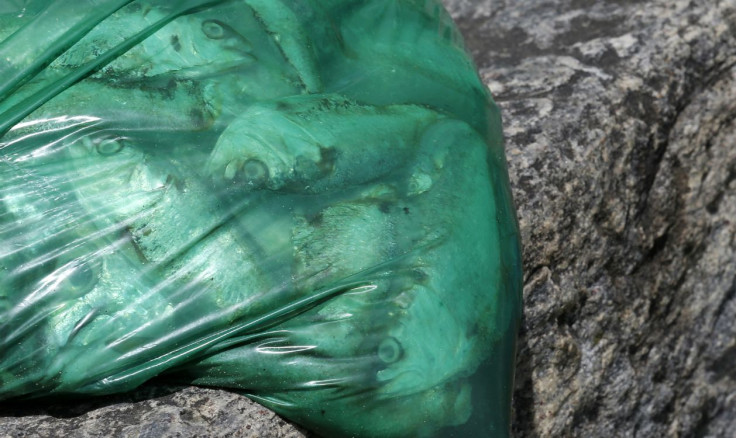Marine animals perish due to microplastics

The continuing plastic contamination of freshwater ecosystems by plastic trash, some of which are microscopic debris, are snuffing the lives of marine animals. Among the marine species deeply affected by plastic pollution are sea turtles, seals/sea lions, seabirds, whales, dolphins and fish.
Studies in recent years underscore that current waste management frameworks may be inadequate to tackle the problem of marine pollution. Research scientists have particularly noted how the depths of the Arctic are at risk of becoming a depot for plastic litter.
The litter levels in the Arctic deep sea have risen rapidly in the past few years, confirmed Mine Tekman, a biologist at the Alfred Wegener Institute's Helmholtz Centre for Polar and Marine Research. Most debris on the Arctic seafloor emanate from shelf areas, river discharges and terrestrial sources transported by winds.
The researchers cited that even though ice-rafted debris mostly comprises fine-grained tiny particulate matter, up to 8mm carbonate minerals in many shapes were observed in the samples from particle traps in the eastern Fram Strait. The findings of Tekman and other researchers were published in the journal Deep Sea Research I.
The negative impact of marine litter, especially plastics, on "charismatic megafauna" like turtles, marine birds, mammals or fish has been well-documented. The recent study, wherein the marine biologists experimentally deployed litter on the Greek seafloor, showed that it altered both species abundance and community structure.
Scientists noted though that it was difficult to ascertain whether what they have witnessed reflects an uptick in microplastic pollution or is evidence of larger plastic pieces fragmenting as they wend their way to the bottom of the ocean.
In other studies, tiny plastic microfibres from people’s clothing were found in numerous shores. Ecologist Mark Brown in 2011 found out that washed synthetic clothing pieces such as yoga pants release about 1,900 plastic microfibres into waterways.
The fibres made of plastic polymers persist in the environment rather than degrading quickly the way bio-based fibers like cotton or wool do. Fish then ingest the fibers when they feed, and when humans eat those fish, they ingest those fibres too.
The plastics – whether fragments of larger plastics, microbeads or the fibres from apparel that is laundered – are made of chemicals. Hence, they pose health hazards to marine organisms and humans that consume them.
Time and again, eco-friendly initiatives such as the use of reusable grocery bags when shopping have ingrained on people the pitfalls of using plastic bags and containers. Yet the problem has remained unsolved. It brings attention to the pressing need to rethink usage of plastic materials as well as synthetic fibres. Beach cleanups are also a good way for people to lessen their plastic footprint.




















